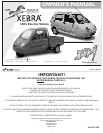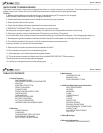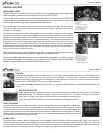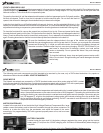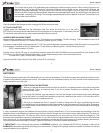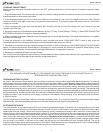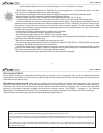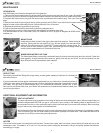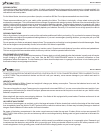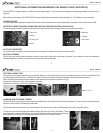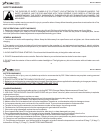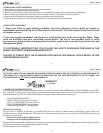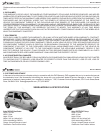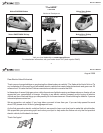
CHARGING THE BATTERIES
Before charging make sure the ignition switch is in the “OFF” position and the key is out of the ignition. It is best to charge the Xebra
overnight.
1. Plug the charger into a 110 volt wall outlet.Any outlet to be used for charging needs to be rated at a minimum of 20 amps and needts
to be adedicated circuit to charging theXebra.
2. It can take approximately an hour to refresh your Xebra to a point where you can drive it for another three to four miles. Optimal
charge is achieved after eight hours (longer for extended range batteries). The charging system will stop the flow of current when
charging is complete.
3. When unplugging the power cord from the Xebra, don't forcefully pull the cord from the charger jack. Use caution to keep the
contacts intact overtime
4. Store and charge your Xebra at temperatures between 50deg. F (10 deg. C) and 100 deg. F (38 deg. C). See CONDITIONINGTHE
BATTERIESfor important information on freezingconditions.
5. Keep your batteries charged. Batteries stored for long periods of time will self-discharge. The higher the temperature, the greater
the rate ofself-discharge.
6. Keep the terminals on the batteries, contactors, motor controller and motor CLEAN AND TIGHT! Loose or dirty wires and
connectors can leadto unnecessary battery drain ordiminished performance from yourvehicle.
7. Recharge your batteries when you have discharged a maximum of 50% as described in the CONDITIONING THE BATTERIES
section for optimal performance. Greater depth of discharge on a continual basis will diminish the overall life of the battery. Unlike
other rechargeable batteries,it is not possible todamage the batteries bycharging them frequently.
8. Recharge yourbatteries at least once every30 days.
Hint: Using a cord with a lighted plug end will let you see immediately if there is power to the outlet you are using. Make sure you have
the proper gaugecord for the distance fromthe outlet, as discussedabove.
11
Owner’sManual
ZAP ASSUMESNORESPONSIBILITY FORDAMAGEORLOSSOFRESOURCESINCONJUNCTIONWITH
IRRESPONSIBLECHARGINGPRACTICES.
As noted in the Instrument Panel section, periodic checks of the battery voltage with a digital meter are recommended. To manually
check voltage, first turn the heater on for 2 to 3 minutes (to remove surface charge). Leave heater on. Place a lead on each terminal of
the first battery. Record the reading. Itshould be 12.6V or higher. Repeat for all sixbatteries. Avoid shorting terminals
together with tools oryour body!!Add the six readings together andcompare with analog meter reading.Alternately, make one reading
across the entire pack by placing one lead of your meter on the beginning and one lead on the end of the string. This requires long
leads for the sedan.The digital meter will giveyou a very accurate reading, whereasthe dashboard meter is a relativemeasurement to
aid you while driving.Another, perhaps more accurate way to determine the state of the batteries and charger function is to buy a Kill-
A-Watt hour meter. It will record how much energy is going into the batteries during charging. A fully discharged pack should take
4.75kWh or higher.
The ZAP warehouse in Santa Rosa, California will accept old battery packs. Or you can drop them off at your local hazardous waste
disposal facility, most Interstate Battery distributorsor any other batteryrecycler (see Recycling Batteries).
The main limitation of any electric vehicle (EV) is its limited range between charges. The duration of an average charge, at an even
speed of 30 mph on level terrain, will yield approximately 20 miles of travel on one charge. Lower speeds will yield more miles, higher
speeds less miles per charge. Factors such as prolonged high speed, excessive stop and go traffic, inclined or uneven roads and
weight will play a role in the distance you can drive. However, if you're like most Americans and your household owns more than one
car, then at least one of these cars probably doesn't go more than 30 miles in any given day, which is within the range of your Xebra.
Note: If you plug in twice a day you can double your daily range! . If your level drops below 60V while
you are driving at a steady speed, you will not be able to operate the vehicle. If you find you are low on power, stop at a location where
you can plug in your Xebra. In the event of an outage, we ask that you are responsible with your charging methods. The use of
business power outlets without express permission is prohibited. Please be aware of your charging location. Look for public charging
locations.Allowing the batteriesto rest for 30 minutesmay give you amile or two more.
CHECKING BATTERY VOLTAGE
EXTENDING THE RANGE
USE CAUTION!!
Stay aware of the voltage meter
12
Owner’sManual



